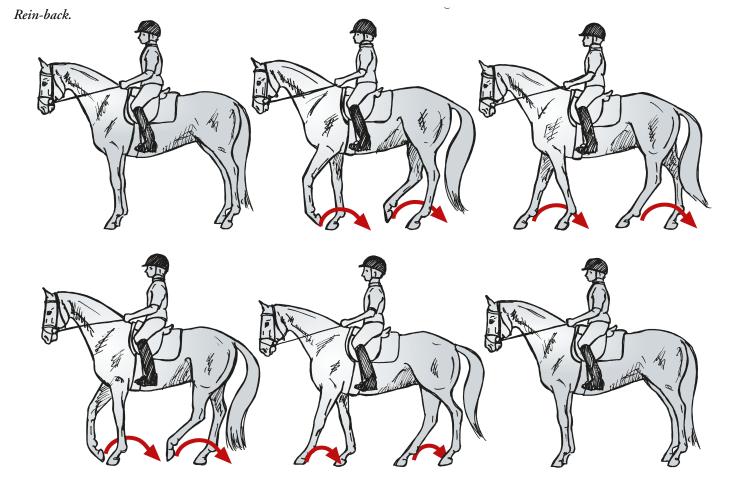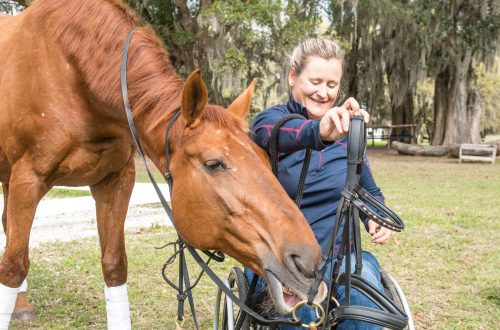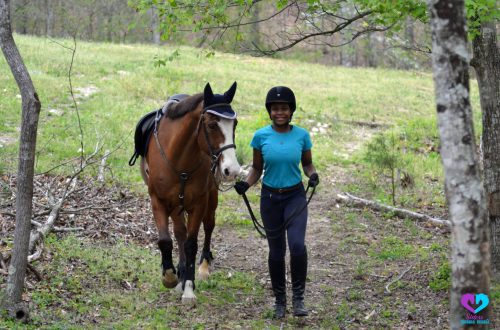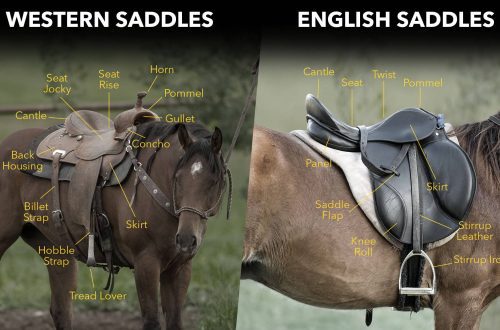
Teaching the horse to rein back
Teaching the horse to rein back
Have you ever been in a situation where the ability of a horse to calmly and smoothly rein back was essential? At the same time, you asked the horse to step back, but instead of reining in smoothly, without fuss, how do you imagine imagined, the horse behaved as if you forgot to remove it from the handbrake: threw back its head and neck ago, holding them high in protest, and the hooves seemed to be just glued to the ground. Or perhaps it didn’t go straight back, but moved somewhere at a 90 degree angle from where you were?
reinstatement – a really useful skill for a horse, and you can start teaching it at any time – while in the stable or working in the arena under the saddle, whether it is a young horse or an already more experienced one. The ability to smoothly send the horse back in any direction you need can be useful to you in a wide variety of situations. This wonderful tool will even help you open the gate if you don’t want to dismount your horse.
We must begin by realizing what is the correct and balanced rein back. We know that the horse must go back, but how exactly does it to do is critical to the overall success of the movement.
When a horse walks backwards, its legs move in diagonal pairs. The right front and left hind legs move back together. This is one step. Then the left front and right hind legs move back together (second step). The horse at the same time should remain straight, her bottom should step slightly deeper under the body with each step.
The horse’s back should remain relaxed, as should his head and neck. When she besieges as far as you want, she should immediately, without hesitation, go forward as soon as you ask her to do so.
While the horse is moving backwards, the rider must remain upright, using the core muscles to lighten the seat bones slightly. The rider moves his leg back a little to encourage the horse to lift his legs, and then with a passive rein keeps her from moving forward. The rider can use their legs either together or one after the other, depending on the situation.
This all sounds easy enough, however, if you don’t have good basic training, you won’t achieve a calm, relaxed sitting back just by following the above guidelines. In fact, many bad or erroneous reins performed by riders are a direct result of a lack of foundation and patience when it comes to explaining what they expect from a horse.
As mentioned above, horses can be taught to rein at an early age. It usually begins with a request to step back in the stall. Instead of just pushing the horse, consider using this basic movement as a start (you can continue to learn it later under the saddle).
Regardless of the age of your horse, I suggest that you first take him to the arena (fully saddled if necessary) and begin to explain the principle of reining in the hands. Ask the horse to stop properly (“square”). As soon as he stops, without fidgeting, place your hand on his chest in front (where the base of the neck is) and, using a little pressure, push the horse back, asking him to do so with his voice. Use the same voice command in every lesson (I use “back”). Later, when you start working under the saddle, you can use it from above.
To start, ask for one or two steps. Don’t worry if they are indecisive or uneven. It is important to reward any step in the “correct” direction and then ask the horse to move forward immediately after reining in.
Moving forward after the reins are completed is vital. Allowing the horse to stop and wait for him to take a few steps back can help you instill bad habits in him. The horse must always think about moving forward!
When asking a horse to rein, do not pull on the reins or lead. Use your voice prompts and chest pressure. This is really important: the rein should never be used to “pull” the horse back. The horse must first understand the concept of moving backwards, and then when you are in the saddle, the reins will simply tell the horse: “Now with the raised leg, not forward, but back.”
When the rider uses the reins to actually move the horse backwards, the usual effect is for the horse to lift its head and neck, causing it to tense up and become stiff. This, in turn, leads to the fact that the stages of reining in become intermittent and shortened, and their sequence is also violated. Instead of the legs moving in diagonal pairs, the horse moves each leg individually. Such a movement cannot be called a backsliding.
Take the time to really make sure your horse understands what is being asked of him on the ground when he is not burdened by the extra weight of the rider before you mount. Once you are in the saddle, I suggest finding a good helper who, while standing on the ground, would do the same actions that you previously did, the same basic pressure on the front of the horse.
Sitting in the saddle, you ask for a “square” stop, and then lighten your sit bones a little and move your legs back a little. Then ask the horse to raise his leg. At this point, your helper will apply pressure while you say “Back” and keep the horse from moving forward on the passive rein. As before, first ask for one or two steps, then move the horse forward immediately after reining in.
Make sure you stay upright. Many riders will lean forward a little to try and lighten the seat, but this is uncomfortable for the horse and adds to the imbalance. Don’t pull the reins. With them, we simply direct the horse’s legs, show where to rearrange them. The reason is the hint, not the steering!
Finally, once your horse has a clear understanding of what is required of him, you can begin to work with reins as part of your daily routine. As the horse becomes stronger and more balanced, he will be able to perform a sharper and longer rein, but in general it is usually 4 to 6 steps. Remember to ask the horse to move forward in any gait, walk, trot or canter, every time immediately after reining in, so that he continues to think about moving forward, not backward.
Reining will not only help make the horse more supple, but will also strengthen the hindquarters for work that will require more collection.
Lorna Leeson. Translation Valeria Smirnova (a source).





